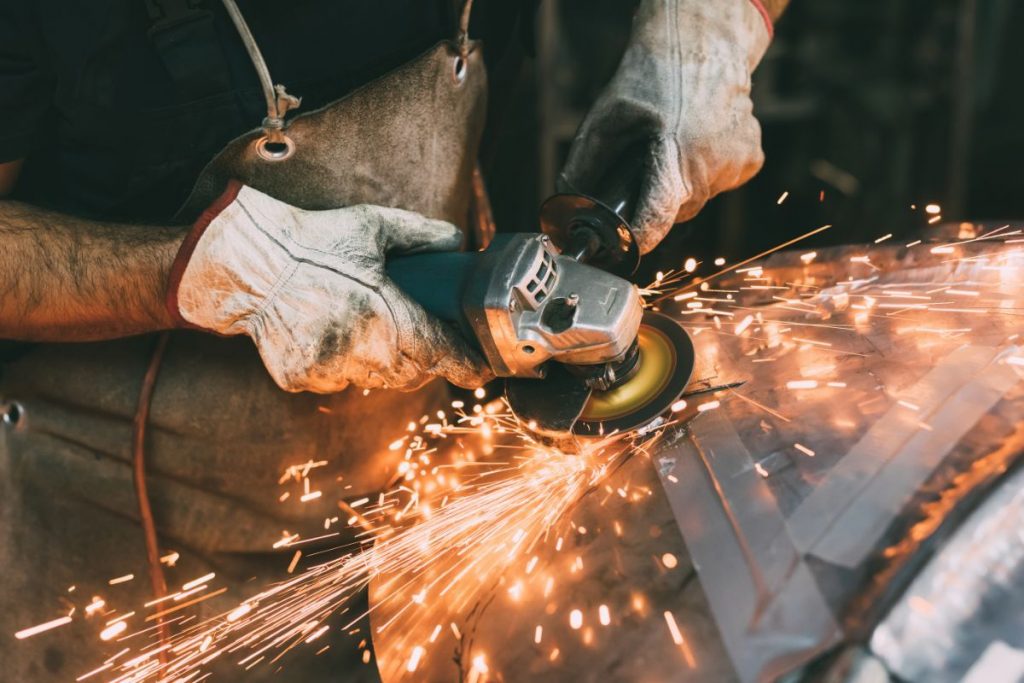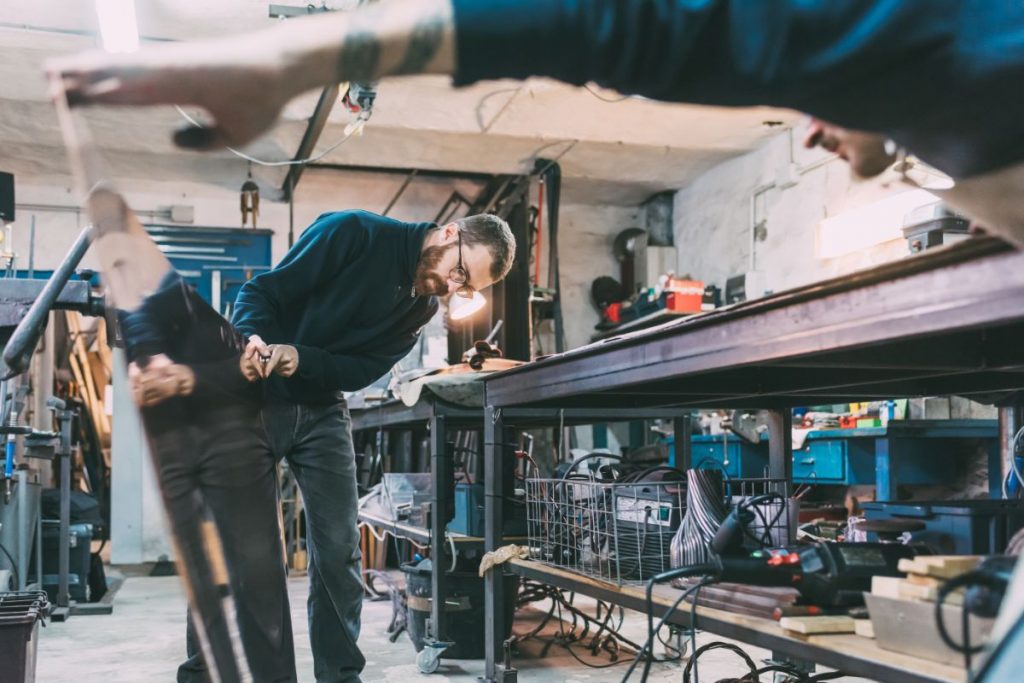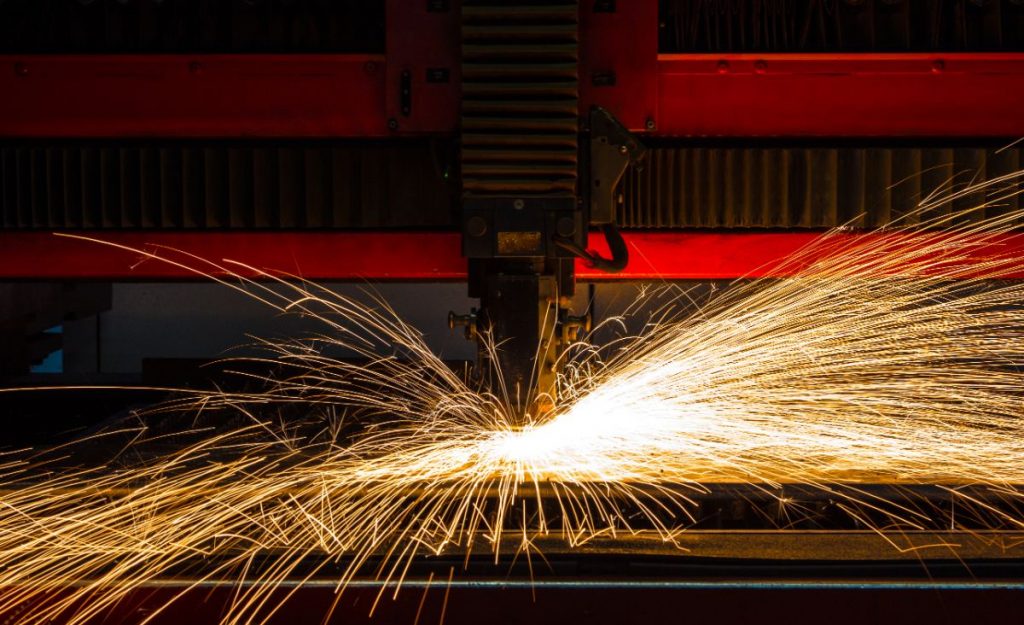4 Potential Dangers of Handling Sheet Metal

What are the potential dangers of handling sheet metal?
- Inhaling dust
- Lifting injuries
- Burns
- Cuts and lacerations
Sheet metals come in many shapes and sizes. It’s an ever-useful and versatile metal product. Starting from a humble two dimensions, it can be bent, shaped, pressed, rolled, and fabricated into all sorts of shapes for a myriad of uses. Pipes, blocks, plates, rods, balls, discs, wires – you name it, and sheet metal is likely to play a role in it.
Due to their abundance and widespread use, it’s a must-have for all metal manufacturers and fabricators to know how to handle sheet metal safely.
Here are the potential dangers of handling sheet metal that you should be aware of. This knowledge is a must for anyone who works with it.
Inhaling dust
Beginning with the most inconspicuous and seemingly harmless, dust inhalation is an invisible threat. You may not even be aware you’re breathing in these dangerous fumes — until you start to actively seek it and be alerted of its presence.
Inhaling dust while working with sheet metal is a big deal. Whenever you fabricate this material, it starts to fly quite literally everywhere. It’s created as microscopic pieces of metal become chipped off as the sheet metal is cut, bent, or otherwise formed through tools and machines.
In a workshop environment there is more metal dust than you’d expect due to the activities that are done in it – cutting, sawing, sanding, buffing, welding, moving, and so much more. All these tasks create thousands of tiny particles. They are near-impossible to see, even in large numbers.
The danger of having this dust breathed in seems harmless at first but for a worker who experiences this often, a little becomes a lot and can cause permanent damage to their respiratory system. Thus, the use of dust masks is absolutely essential.
Lifting injuries

Moving on to what most consider to be less “harmless” but still within the lines of “potentially dangerous” is the threat of injuries caused by lifting sheet metal.
Sheet metal is heavy – it’s kind of a thing for metals, without a doubt. In addition to this, the nature of the shape of sheet metal does not make things easier. It’s awkward to lift.
Pulling a muscle or bending the wrong way will not only cause pain, but could even cause long-term injuries. The most common ones after lifting metal the wrong way are pinched nerves, broken bones, and torn muscles.
This is why automation or mechanical assistance is highly encouraged. Not only does it make things faster, but it also makes things safer and guarantees the efficiency of production.
An injured worker can certainly slow down if not halt the production process, that’s why be aware — always be careful when lifting sheet metal.
Burns

One of the defining characteristics of metals is the fact that they are conducive – not only to electricity but also to temperature. Workshops easily get hot with all the machinery and tooling that goes on inside. And, many metal-forming processes, such as welding, generate heat on the sheet metal itself. This danger of handling sheet metals is very real and is quite common.
Something as simple as leaving the sheet metal out in the sun can raise the temperature enough so that it can cause injury the moment you touch it. Likewise, working with sheet metals could create pieces of metal that are hot to the touch.
So, if you’re a worker going around without gloves or the right equipment, a quick exposure could scorch, burn, and blister whatever part of the skin that it touches — even for less than a second.
Cuts and lacerations
Sheet metal is sharp — especially if it’s recently cut. If you look at freshly cut sheet metal up close under a microscope, you’ll see that its edges are jagged — much like little saw teeth.
This problem is especially dangerous when it comes to the corners. Because of how they’re made, the jagged edge of a sheet metal corner can act like a spearhead. If you’re not careful, they can cause cuts on anyone who handles them.
This is why extreme precaution is needed when handling sheet metal. For this reason, you should always make sure your people are equipped with the right protective gear to prevent any cuts or scrapes. This includes things like thick gloves, overalls, and long-sleeved undershirts. You should also consider steel-toed boots — just in case someone drops a freshly cut piece of sheet metal.
Key Takeaway
Now that you know the common dangers of handling sheet metal, you are better equipped to take on any sheet metal project! Given the right knowledge and resources, you can make use of this versatile and functional material without fear of injury.
Need a reliable source of sheet metal? Reach out to Metal Exponents. We have years of experience under our belt — which helps us provide the best sheet metal products in the industry!


